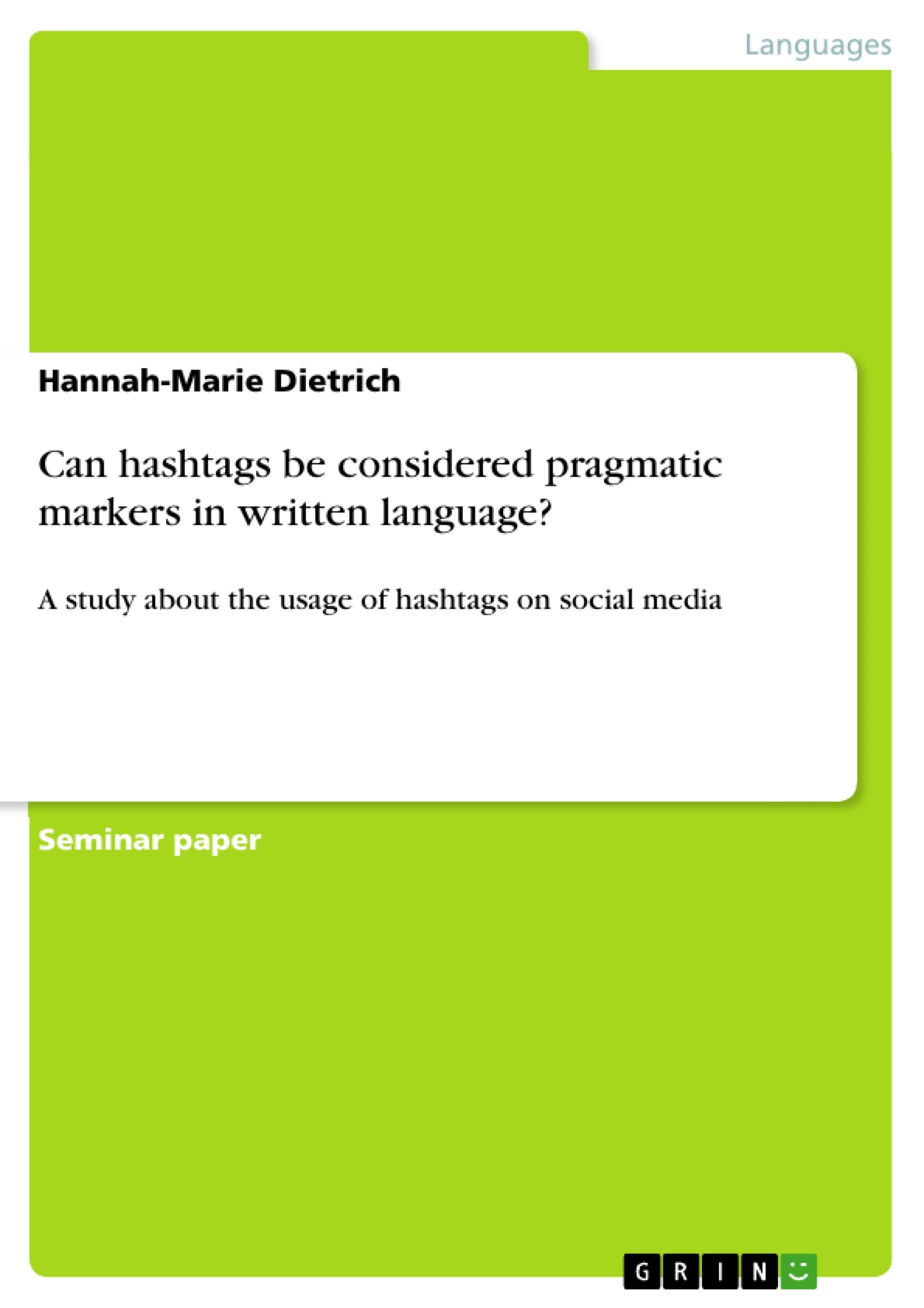Can hashtags be considered pragmatic markers in written language? This paper will firstly provide a theoretical overview on pragmatic markers and hashtags with the most important features. Secondly, it will explain the methodology and collected data of a self-made survey. Then, the analysis will draw a line between theory and survey and will answer the guiding question. Finally, the conclusion will summarize the most important results and give a short outlook on a possible evolution of hashtags in the future.
Communication happens in many ways. It happens verbally, through intonation, gestures or facial expressions. It happens everywhere. It happens between friends, it happens in cafes, it happens in books and it even happens online. And communication happens all the time. Even when we do not think about it, we sometimes communicate without knowing and other times, we do it on purpose. Pragmatic markers, such as well, actually or fair enough most often occur in spoken language and are often intentionally used to convey meaning beyond the actual content of a conversation. By using pragmatic markers, a speaker can, for example, show empathy, change the topic of a conversation or criticize what a different speaker said. All this happens within the actual discourse and can provide essential metainformation.
Hashtags, however, most often occur in written language, especially on social media platforms, and are a combination of the # (hash) and a word or phrase following a certain purpose. By means of the following paper, these two ways of communicating are to be explored in detail.
Inhaltsverzeichnis (Table of Contents)
- Introduction
- What are pragmatic markers?
- What is a #hashtag?
- Survey
- Methodology and Data
- Personal Data
- Social Media Behavior
- #hashtags
- Analysis
- Methodology and Data
- Conclusion
- Sources
Zielsetzung und Themenschwerpunkte (Objectives and Key Themes)
This paper explores the use of hashtags on social media platforms and investigates whether they can be considered pragmatic markers in written language. It provides a theoretical overview of pragmatic markers and hashtags, presents data from a self-made survey, analyzes the findings, and draws conclusions about the potential of hashtags as pragmatic markers.
- Definition and functions of pragmatic markers in spoken language
- Characteristics and usage of hashtags on social media platforms
- Analysis of survey data to determine the potential of hashtags as pragmatic markers
- Discussion of the potential evolution of hashtags in the future
Zusammenfassung der Kapitel (Chapter Summaries)
- Introduction: This chapter sets the stage for the paper, discussing the importance of communication in various forms and highlighting the increasing presence of online communication. It introduces the concept of pragmatic markers and hashtags and poses the central question of whether hashtags can be considered pragmatic markers in written language.
- What are pragmatic markers?: This chapter provides a theoretical overview of pragmatic markers, exploring their definitions, functions, and characteristics. It discusses the diverse terminology used by researchers and highlights the importance of pragmatic markers in conveying meaning beyond the literal content of an utterance.
- What is a #hashtag?: This chapter defines hashtags and explains their role and functions within social media platforms. It explores the specific features and usage of hashtags in written communication.
- Survey: This chapter outlines the methodology and data collection process for a self-made survey, providing details about the data sources, participant demographics, and survey questions.
Schlüsselwörter (Keywords)
This paper focuses on the analysis of hashtags as potential pragmatic markers in written language, specifically within the context of social media platforms. Key terms include pragmatic markers, discourse markers, hashtags, social media, written language, communication, and survey analysis.
- Quote paper
- Hannah-Marie Dietrich (Author), 2020, Can hashtags be considered pragmatic markers in written language?, Munich, GRIN Verlag, https://www.grin.com/document/972317



